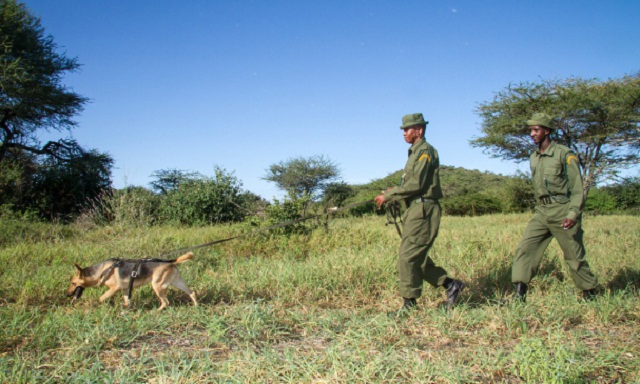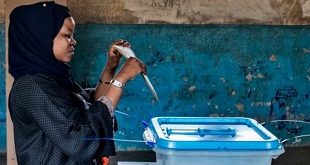
Maasai Mara, Kenya | AFP | Five-month-old bloodhound Shakaria gambols through the long savannah grasses of Kenya’s Maasai Mara reserve, her playful mood swiftly turning to keen determination as she is ordered to track a human scent.
Straining at the leash, she pulls her handler along an invisible scent path laid down for her until she finds a ranger hiding in the grass, pretending to be one of the poachers she is training to sniff out.
Shakaria is top of her class of five puppies being trained by American experts to join a tracker dog unit, which has become pivotal in the fight against poaching in the Mara Triangle, part of the vast Maasai Mara ecosystem in southern Kenya that merges into Tanzania’s Serengeti.
It is here that over one million wildebeest, and tens of thousands of other animals cross from Tanzania into Kenya on their annual migration, attracting hordes of tourists, but also poachers seeking an easy target.
– Snares and machetes –
Lema Langas, 30, a Maasai from the local community, who is warden of the canine unit, said the main challenge in the park was poaching for the commercial bushmeat trade, with dried meat exported to Uganda, Rwanda and further afield.
“Thomson’s gazelles, impalas, giraffes, buffalos and during migration season when the wildebeest are here they become an easy target… (poachers) put down wire snares or maybe they can chase them into valleys and use machetes to cut them,” he told AFP.
Elephants, lions and other members of the famed “Big Five” also get trapped in the snares.
Rangers used to struggle to chase or spot poachers across the flat, seemingly endless grasslands, so the Mara Triangle first introduced two tracker dogs in 2009.
The unit is now comprised of four tracker dogs and two more trained specifically to sniff out ivory and guns at the entrances to the park.
“They use their noses to see, not like us who use the eyes,” said Langas.
“So sometimes you are not able to see the footprint of the poachers… but when you suspect the poacher might have passed here you allow the dog to follow the scent… and you are able to retrieve that poacher at the end of the day.”
 The Independent Uganda: You get the Truth we Pay the Price
The Independent Uganda: You get the Truth we Pay the Price


